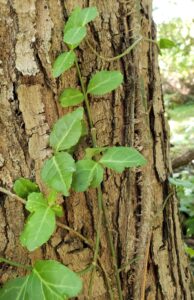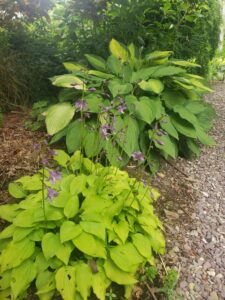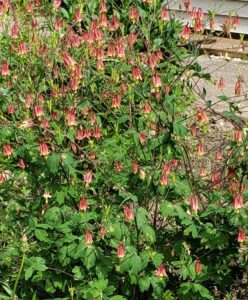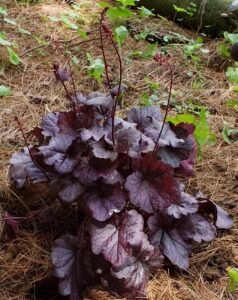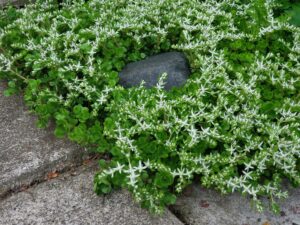For some, the term “shade garden” may be an oxymoron. When imagining a garden, most will think of a sunny area filled with flowering plants. So, it’s not surprising that gardeners would often fill shady areas with a hardy, evergreen ground cover and never look back. However, ornamental shade gardens have been the source of some of the most devastating invasive species in our Indiana woodlands.
Two of the most commonly planted shade-loving ground covers have been winter creeper (Euonymus fortunei) and English ivy (Hedera helix). Both plants form dense mats and spread rapidly with very little maintenance, which made them a desirable option for those less than desirable shady areas. Those same characteristics also make for a highly invasive species.
Winter creeper and English ivy made their way out of the garden and into our woods where they wreak havoc. Creeping their way across the forest floor, they smother out native ephemerals. Climbing up tree trunks and wrapping around branches, these vigorous vines block sunlight from reaching the tree canopy and slowly weakens the tree (Fig. 1).
- Winter Creeper
- Hostas
However, it’s still possible to have a beautiful, low-maintenance shade garden without contributing to the decline of our forests. Hostas are non-native but are a well-behaved option and come in a variety of sizes and shades of green (Fig. 2).
Other native species that thrive in partial to full shade include:
- Columbine
- Coral Bells
- Wild Stone Crop
Columbine (Aquilegia spp.) (Fig. 3)
Coral bells (Heuchera spp.) (Fig. 4)
Ostrich fern (Matteuccia struthiopteris)
Wild ginger (Asarum canadense)
Wild stonecrop (Sedum ternatum) (Fig. 5)
Blue-eyed grass (Sisyrinchium angustifolium)
To beat the heat of Indiana summers, try expanding your garden into the shade, but plant responsibly.
Invasive species to avoid in the shade garden:
Periwinkle (Vinca minor)
Mondo grass (Liriope spicata)
Goutweed (Aegopodium podagraria)
